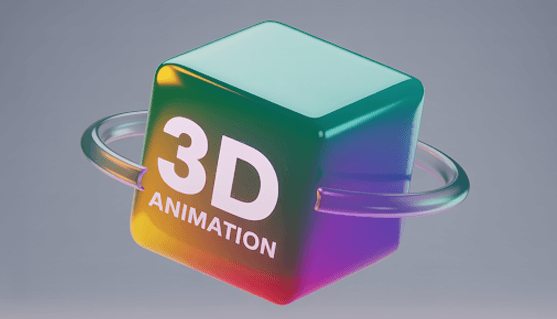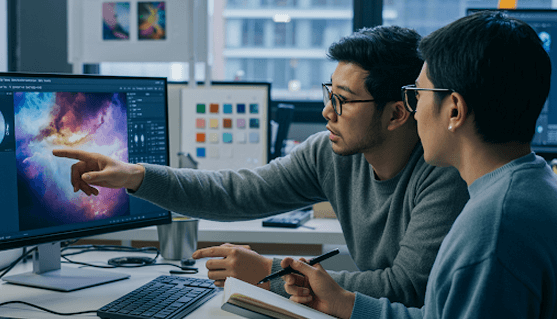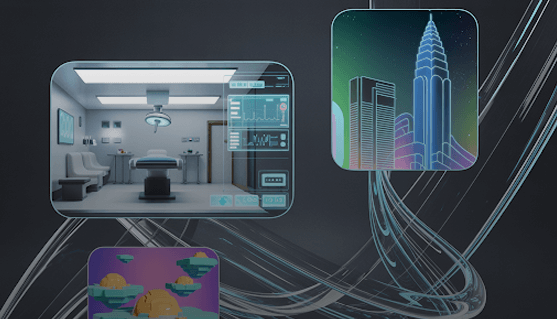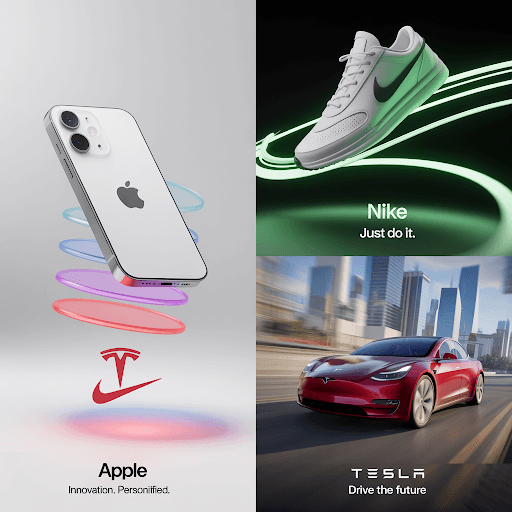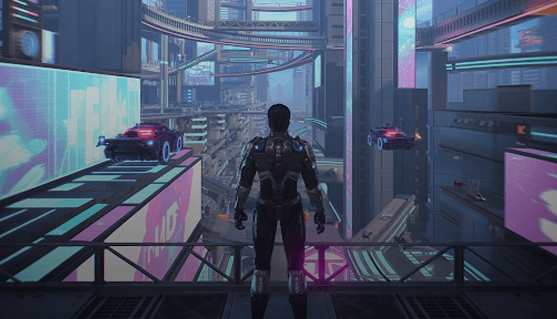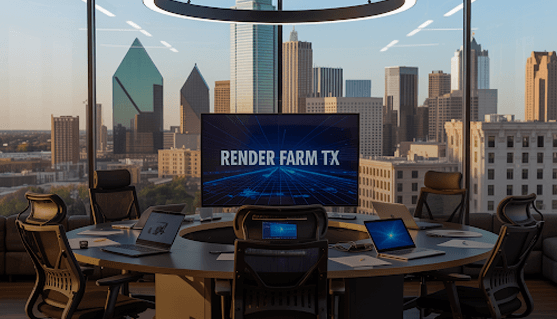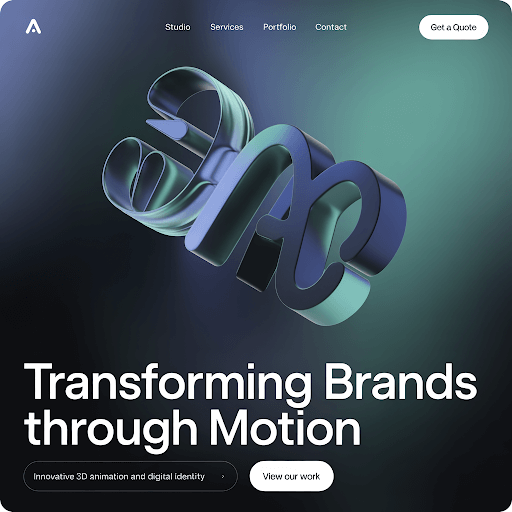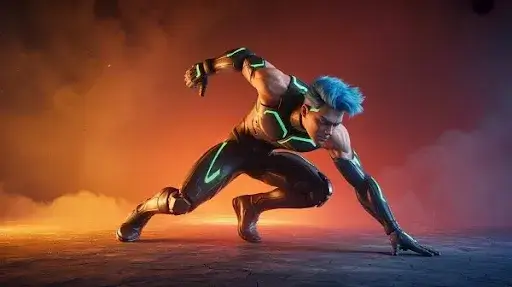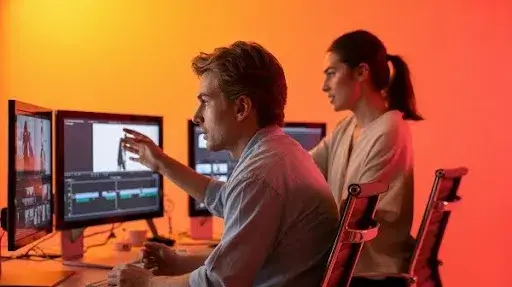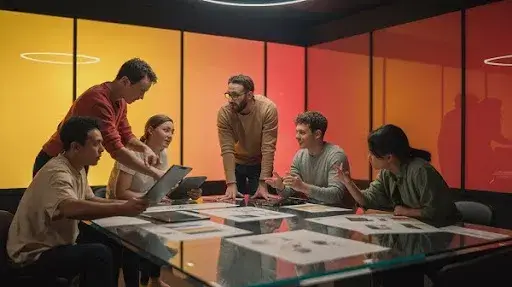3D animation is in constant evolution, and there is no stopping it. From screen-popping visuals in Marvel films to interactive medical simulations.
But behind the glossy surfaces lies a powerful, process-driven craft redefining how businesses communicate, storytellers engage, and industries evolve.
This no longer focuses on animation or video games. The estimated prediction for 3D animation in 2025 includes industries such as healthcare, e-commerce, architecture, pharmaceuticals, and many others.
This is why animation’s market value will rise from $195+ billion in 2025 to almost $350 billion in 2030.
If you want to know what 3D animation really is, its relevance to the modern world, and the technology we have today, get ready to discover far more than you are anticipating.
Let’s get into the full landscape of 3D animation: how it’s made, where it’s used, and why you might need it more than you think.
What Is 3D Animation and Why Is It So Powerful in 2025?
The entire process of 3D animation merges artistry, technical detail, and narrative design and is a world unto itself. It involves a digital space where moving images are vividly crafted and brought to life. A 3D environment serves as a base for depicting depth alongside realism to the viewer.
This depth brings characters, products, and environments to life in a way that static visuals simply can’t.
The question isn’t just “What is 3D animation?” It’s how it drives decision-making, storytelling, and innovation across industries.
In this era of technology, the reliance on 3D animation in advertisement, interaction, and visually captivating through sharp emotions and details is nothing short of revolutionary.
The 3D Animation Process: From Concept to Screen
Understanding the 3D Animation Production Process
Behind every stunning frame lies a meticulous workflow. The 3D animation production process is both technical and creative. Here’s how it typically unfolds:
Step-by-Step 3D Animation Process:
- Concept Development
It all starts with an idea. The animation team defines the story, purpose, tone, and message.
- Scriptwriting and Storyboarding
Scripts guide the narrative, while storyboards sketch out scenes visually, serving as a blueprint.
- Modeling
Artists create 3D models of characters, objects, or environments using specialized software like Blender, Maya, or Cinema 4D.
- Texturing and Shading
These models are given color, texture, and surface qualities to match realism or a specific style.
- Rigging and Animation
Characters and objects are rigged with virtual skeletons, allowing animators to move them naturally. Animators then breathe life into the models with movement.
- Lighting and Rendering
Lighting adds mood and depth. Rendering transforms the animated scene into high-quality visuals.
- Compositing and Editing
Final touches, effects, and sound are added. The animation is edited into its final form, ready for use in campaigns, apps, videos, or presentations.
The constant transformation of innovative software and tools improves the efficiency of storytelling, artistry, and motion graphic elements.
How Is 3D Animation Created in 2025?
As a result of AI-assisted animation and cloud-centric technologies, 3D production companies in the USA are advancing with unparalleled speed.
Studios can now simulate hyperrealistic physics, generate procedural environments, and even allow real-time feedback during animation reviews.
For instance, 3D animation studios in Dallas are utilizing GPU-rendering farms and collaborative tools to enhance interactivity and speed in delivering results. This technology enables companies in the U.S. and other parts of the world to lower turnaround durations while maintaining high work standards.
Uses of 3D Animation Today
The uses of 3D animation today go far beyond movies and video games. Let’s look at how different industries are benefiting:
1. Healthcare & Medical Fields
Medical professionals can use 3D animation to explain procedures, surgeries, or conditions in a clear, patient-friendly way. Animated simulations help doctors train and patients understand complex medical concepts. Pharmaceutical companies also use 3D animations for drug mechanism visualizations and product marketing.
2. Product Visualization
Need to sell a product without manufacturing it first? 3D animation to showcase products is one of the smartest routes today. Businesses use 3D animation to create stunning product visualizations, whether it’s furniture, gadgets, or cosmetics, to help customers visualize size, function, and design.
3. Architecture & Real Estate
With architectural walkthroughs and virtual tours, clients can “walk through” a property before a brick is laid. 3D video animation in Los Angeles has become a tool for top real estate firms to close high-end deals and demonstrate visionary designs.
4. Gaming & Interactive Media
The power of 3D animation in gaming cannot be overstated. Dynamic environments, lifelike avatars, and physics-based simulations have increased game storytelling. 2025 sees deeper integration with VR and AR as well.
Key Differences Between 2D and 3D Animation
Many people confuse 2D and 3D animation, but they’re fundamentally different in form and function.
Key Points of Comparison:
| Aspect | 2D Animation | 3D Animation |
| Visual Depth | Flat, only height & width | Includes depth for realism |
| Tech Used | Frame-by-frame drawing | Modeling, rigging, rendering |
| Applications | Simple web graphics, 2D cartoons | Films, games, medical, and product demos |
| Cost | Lower budget | Higher investment, greater impact |
In short, 3D animations create incredibly realistic visuals and opportunities that 2D often can’t achieve, especially when realism and immersion are key goals.
Real-World Example of 3D Animation
A strong example of 3D animation is IKEA’s AR app. It uses 3D models to let users place furniture virtually in their space. The result? Fewer returns, higher customer satisfaction, and a smarter shopping experience.
Apple, Nike, Tesla—virtually every forward-thinking brand uses 3D animation to create stunning product visualizations that convert browsers into buyers. The trend is only gaining momentum.
What Are the Benefits of 3D Animation in 2025?
For businesses and creators, the advantages of 3D animation go beyond visual appeal; they are also about business performance. Here is how it is revolutionizing advertising and marketing for businesses and many sectors:
1. High Visual Impact
The graphics with 3D animations are captivating, emotionally rich, and detailed, adding a memorable touch to messages, whether a product, an idea, or a story.
2. Increased Engagement
Consumers today scroll fast. You have seconds to grab attention. 3D animations do just that with lifelike movements, transitions, and perspectives that static visuals can’t match.
3. Flexibility and Control
With 3D animation technology, anything can be exhibited, such as a micro view of a human cell or a future skyscraper. You also have full control over the camera angle, lighting, texturing, and timing.
4. Cost-Effective in the Long Run
Once a 3D model is created, it can be reused and repurposed across platforms, websites, ads, AR, videos, and presentations, saving you money on reshoots or reprints.
5. Competitive Advantage
A high-tech edge given to the brand in highly saturated markets is still a novel idea for many businesses to adopt. Showcasing a product with 3D Animation Technology or explaining the service with it adds value.
How Brands Use 3D Animation to Showcase Products
E-commerce is booming, but it also comes with a challenge: how do you sell something people can’t touch?
That’s where 3D animation to create stunning product visualizations comes in.
Instead of using static images to advertise products, brands now use animation to present videos showing 360-degree views, how-to demonstrations, and even an explosion view of the internal parts of the products. These animations boost customer confidence and reduce hesitation at checkout.
Top Ways Brands Use 3D Animation for Products:
- Virtual Try-Ons (glasses, makeup, clothing)
- Unboxing Experiences
- Explainer Videos
- Augmented Reality Previews
- Social Media Ads
Brands such as Samsung and Nike incorporate 3D product animation into their marketing funnels and reap the benefits of enhanced customer engagement, higher conversion rates, and a modern brand image.
Why 3D Animation Services in Los Angeles Are Leading the Charge
Los Angeles, long the home of creative media, has evolved into a hub for digital animation. Studios offering 3D animation services in Los Angeles are blending cinematic storytelling with cutting-edge technology.
From Hollywood film production to SaaS product animations, LA-based creators understand how to blend visuals with purpose. It’s not just about looking good; it’s about connecting, selling, and communicating ideas.
Plus, Los Angeles’s diversity of industries, from fashion to medical tech, gives local studios like Prolific Studio an unmatched broad creative range.
Types of 3D Video Animation in Los Angeles Making Headlines
Let’s explore some common types of 3D video animation in Los Angeles that are in high demand right now:
1. Architectural Visualization
Real estate developers, interior designers, and architects use it to bring spaces to life before they’re built.
2. Medical Animation
Animated simulations of surgeries, body functions, or pharmaceutical interactions that simplify complex concepts.
3. Product Demos
Used in online stores or tech showcases, especially where a physical demo isn’t practical or affordable.
4. Gaming & Virtual Reality
Creating lifelike, interactive characters and environments for immersive experiences.
5. Corporate & Explainer Videos
Brands now prefer 3D animation for internal training, B2B pitches, and investor relations to elevate professionalism.
When crafted well, each style offers a unique storytelling advantage that enhances message clarity and brand credibility.
Exploring the Power of 3D Animation in Gaming
The deep integration of 3D animation has allowed gamers to experience rich, immersive worlds, transforming gaming from simple graphics to Puma and PlayStation’s cinematic universes.
Cutting-edge 3D animation technologies give modern games like Horizon Forbidden West and Cyberpunk 2077 lifelike characters with hyper-realistic gestures, natural movements, and full-range emotional expressions.
And it’s not just about looks. Animation helps create mood, tension, humor, and drama in gameplay. Combined with real-time rendering engines and AI-enhanced NPC behavior, 3D animation is now central to world-building and user retention.
Notable trends in 2025:
- Procedural Animation
- AI-based Motion Capture
- Cross-platform Portability (PC, Console, VR)
- Hyper-realistic Facial Rigging
Developers increasingly rely on 3D animation studios in Dallas and similar hubs to bring these experiences to life with quality and speed.
3D Animation in Healthcare
Medical professionals can use 3D animation in ways that genuinely make a difference. From teaching patients about procedures to helping doctors train for complex surgeries, 3D makes abstract concepts concrete.
How 3D Helps in Medicine:
- Patient Education: Showing how a heart stent is placed, for instance, is easier through animation than verbal explanation.
- Surgical Training: Animated simulations allow repetitive practice without live subjects.
- Visualization of Drug Mechanisms: 3D animations help pharmaceutical companies explain a drug’s working mechanism on cells at a cellular level.
These technologies will transform telemedicine, psychiatry, and the marketing of medical devices by 2025.
For instance, new articles published on Inc. Magazine focus on the importance of 3D Visualization in the patient-centered approach to healthcare and communication between healthcare professionals and patients.
Frequently Asked Questions
What software is commonly used in 3D animation?
Popular tools include Autodesk Maya, Blender, Cinema 4D, Houdini, and Unity for real-time rendering.
How long does the 3D animation process take?
It depends on complexity. A simple product animation might take 2–3 weeks, while a detailed cinematic sequence can take months.
Are 3D animations expensive?
While the initial investment may be higher than 2D or live-action, 3D is reusable and versatile, offering great ROI over time.
Can small businesses use 3D animation?
Absolutely. Even startups can afford quality animation today thanks to remote workforces and platforms like Fiverr, Upwork, or Prolific Studio.
How do I choose between 2D and 3D animation?
Evaluate your message, budget, and target audience. If realism, detail, or product interaction is involved, 3D wins hands down.
3D Animation Studios in Dallas
When you think of top-tier animation, Dallas might not be the first name that comes to mind, but that’s changing fast.
The growing number of corporate companies, media agencies, and media startups in Texas has led to the high demand and concentration of 3D Animation Studios in Dallas. These studios are focused on the blend of narrative and business.
They’re building powerful visual content that caters to medical, gaming, industrial, and real estate sectors.
Here’s why brands are leaning into Dallas-based 3D animation services:
- Lower production costs compared to LA or NYC
- Diverse creative talent with experience in gaming, tech, and commercials
- Rapid production timelines without compromising quality
- Access to local clients in oil, aerospace, healthcare, and manufacturing
Studios in Dallas are reshaping the narrative that only big-coast cities can deliver stunning animations. In reality, they’re doing it faster, smarter, and often more affordably.
3D Production Companies in the USA Are Setting the Standard
It’s not just about where studios are located; it’s how they operate. The top 3D production companies in the USA now offer services beyond traditional media.
They’re adapting to industries that are becoming more visual and experiential by the day. Everyone, from biotech labs to smart home startups, wants their story told with clarity and impact.
Key Characteristics of Leading 3D Production Companies:
- Full-service pipelines from concept to final animation
- Cross-industry versatility (medical, product, architecture, education, gaming)
- Use of real-time rendering engines for faster delivery
- Integration with AR/VR workflows for immersive experiences
Studios like Prolific Studio have embraced this shift, positioning themselves as animation vendors and visual communication partners that help brands lead through storytelling.
How 3D Animations Create Well-Crafted and Engaging Storytelling
Animation isn’t just about aesthetics; it’s about storytelling that clicks with the viewer. In today’s saturated content world, brands constantly fight to be seen, heard, and remembered. That’s why 3D animations create well-crafted and engaging storytelling across all platforms.
Here’s How:
- Visual Metaphors: 3D allows for creative metaphors, turning abstract data into visual gold.
- Emotional Dynamics: Characters, lighting, and transitions evoke emotional response.
- Branded Environments: Products can exist in custom-created worlds, building familiarity and personality.
- Non-verbal Cues: Through gesture, motion, and facial expression, stories unfold naturally, even without dialogue.
3D storytelling isn’t about delivering a message but helping your audience feel and remember something.
Uses of 3D Animation Today Across Different Industries
Let’s break down how 3D animation is being used today, across industries that go far beyond entertainment:
E-Commerce
- Interactive product demos
- Virtual fitting rooms
- AR previews
Healthcare
- Patient education animations
- Device explainer videos
- Animated surgery simulations
Education
- Animated science simulations
- Historical re-creations
- Training modules for professionals
Engineering & Manufacturing
- CAD to 3D visualizations
- Machinery simulations
- Process demonstrations
Real Estate
- Architectural walkthroughs
- Neighborhood flyovers
- Renovation simulations
Marketing & Advertising
- Social media animations
- TV commercials
- Event visuals
No matter your sector, 3D animation in 2025 is no longer optional; it’s essential.
3D Animation and the Future of Digital Branding
In 2025, animation will no longer be a “wow” factor. It will be a standard branding tool, like your website or logo. From onboarding flows in mobile apps to cinematic intros for product launches, 3D animation is how brands move forward.
The reason? People connect better with movement and realism than they do with flat images or long paragraphs. 3D animation adds life, context, and clarity to your brand’s message.
More importantly, it lets you stand out.
Brands using 3D animation consistently have:
- 20–30% higher conversion rates in e-commerce
- Up to 60% more time-on-page in landing page experiences
- Better brand recall (especially for product-based businesses)
It’s not about following trends. It’s about owning your space in a crowded, visual-first world.
Final Words
If you’ve made it this far, you already understand the undeniable power of 3D animation in 2025.
But the real question is, who’s going to bring your ideas to life?
At Prolific Studio, we don’t just animate, we elevate. Our 3D animation team in Los Angeles blends creative imagination with technical precision to help you:
- Simplify complex stories
- Showcase products with impact
- Train, educate, and convert audiences
- Build unforgettable brand visuals
Whether you need 3D product demos, medical animations, or full-fledged brand storytelling, we’re the studio that gets it done with flair, clarity, and results.
Explore our 3D animation services or talk to our animation experts to see how we can help your brand lead with visuals that speak louder than words.
Related Articles:

